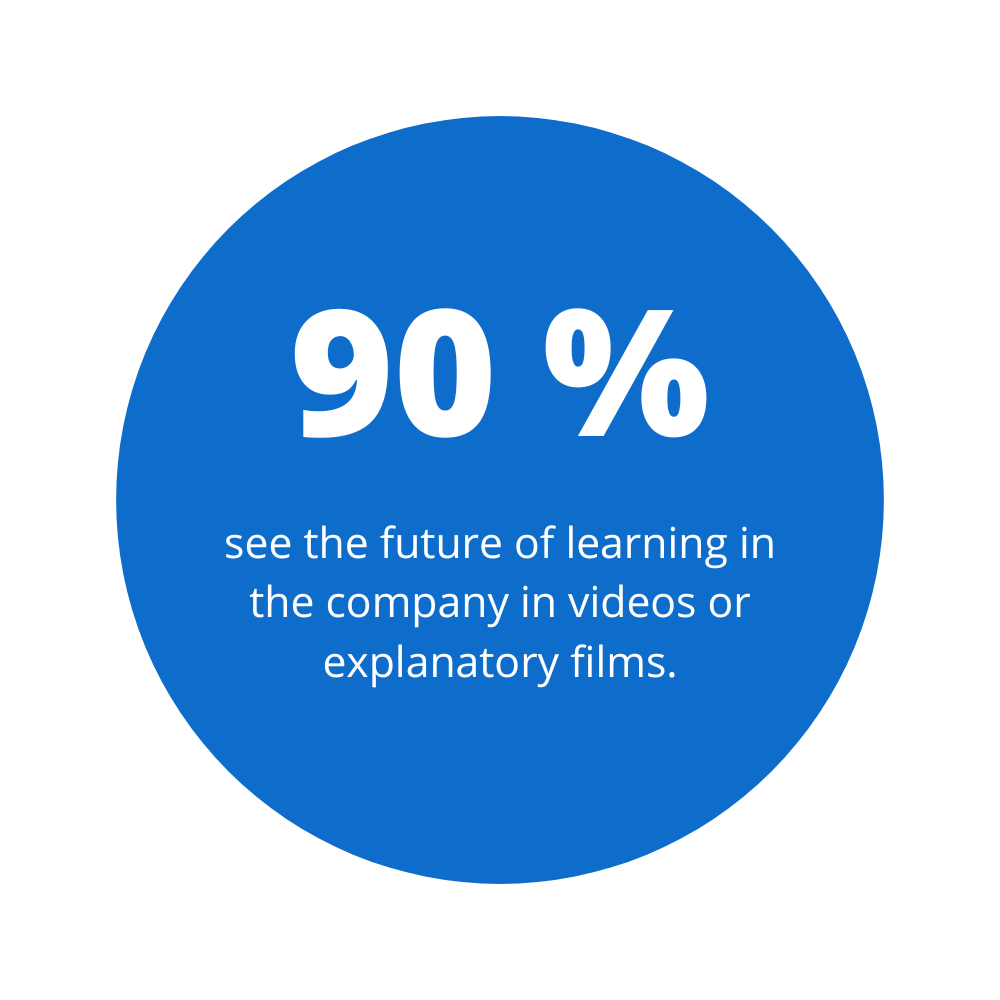It is not that internal knowledge transfer is an uninteresting topic for companies, on the contrary. The importance of e-learning is advancing. But various issues exist that can negatively affect the reputation and effectiveness of digital training in the company.
Whether mandatory training in compliance, occupational health and safety, or future-oriented issues around safety, communication, sustainability, cross-cultural management, and diversity, the importance of professional development in companies is growing. In 2019, a total of approximately 7.41 million working people participated in continuing professional development, reports the statistics portal Statista.com.
Digital learning in particular is playing an increasingly important role. This is shown by an expert survey on the future significance of e-learning applications in German-speaking companies conducted by Statista.com. According to the survey, 90 percent of respondents said that videos and explanatory films will play a key role as a form of learning in companies in the future.
The German government has also recognized this and is supporting the "Digital Education Initiative". This will improve learning, teaching, instruction and training across the entire educational path so that all generations can move confidently in the digital world.

That all sounds very good. But unfortunately, practical experience shows that not everything in corporate e-learning is all sunshine. After all, digital training initiatives in companies often fail. There are five main reasons for this. If these weak points are eliminated, successful knowledge transfer is no longer a problem.
Content is the core of successful e-learning courses. The aim is to provide employees with new, relevant knowledge in such a way that they immediately recognize the relevance of the subject matter personally and for everyday business life, find the content comprehensible and entertaining, and do not feel underchallenged, overchallenged, or bored during e-training.
It is therefore particularly important that the content is developed in collaboration with experienced specialist authors who can contribute their knowledge from years of practical experience. It is then up to the e-learning provider to prepare this content digitally in such a way that it meets the spirit of the times, creates understanding, and offers entertainment.

The design of the courses also plays a role. In this age of streaming services and video platforms, consumers of digital content know exactly what makes a valuable, authentic and contemporary impression on them. Today, it is no longer enough for video-based courses to look as if they were designed and implemented 20 years ago.
Employees notice very well whether the digital training in question was bought in quickly or whether those responsible in the company have thought carefully about the content quality they want to offer their employees. Therefore, care must be taken to ensure that the current technical possibilities and also the visual zeitgeist are used to support employees in achieving the learning objectives.
In addition to the unattractive preparation of the courses, the reasons for failed training initiatives also lie in the fact that topics are taught in a way that is out of touch with reality, too theoretical or abstract, which automatically makes the importance of the topic seem smaller. There is a need for training courses that deal with concrete situations in everyday business life and convey to the training users: "It's your attention and competence that counts!" Storytelling and interactivity are the focus. Because well-told stories generate emotions, while interactive elements directly involve employees in the story.
This is a decisive factor in successful e-learning. Storytelling facilitates access for employees across all hierarchical levels and ensures that the content is really understood and anchored. Through the digital, narrative-entertaining consumption of learning and highly innovative topics, the demands and needs of employees in the working world are addressed and met at an early stage.
A lack of choice of topics is also a regular point of criticism. Yet the world offers enough topics to talk about. But do companies also offer their employees the opportunity to educate themselves about important topics and provide impetus? A comprehensive library concept that combines both mandatory training on topics such as compliance, data protection, occupational health and safety, etc., and innovative, new topics (for example, cyber security, mental health, fairness, etc.) in a digital training library.
The key here is to offer employees an appealing training portfolio. In addition to completing mandatory training courses, employees should also be able to decide for themselves which training courses are relevant to their day-to-day work at the company, but also out of personal interest. By offering a wide range of training courses, the organization signals that continuing education is important to them. Thus, in addition to competencies, ideas and inspiration for future-oriented topics are also promoted among the workforce.

The last point: The cost factor does not have to be a development blocker! It is not uncommon for the budget for personnel development and further training of employees to be at the bottom of the food chain, which often leaves those responsible in this area with their backs to the wall. But what is also certain is that the lack of investment in continuing education and awareness puts the organization at risk for further development and thus continued existence in the future.
In contrast, a library concept allows organizations to take advantage of an adjusted pricing structure without sacrificing course quality. When booking several courses with one provider, costs can be saved with volume discounts on the one hand, and a sustainable e-learning portfolio on the other.
These are the crucial aspects and solutions for the successful implementation of a digital learning culture in the company. In this way, e-learning and thus digital training initiatives in companies do not have to fail.
You’re planning an e-learning campaign with high class content? Let us support you creating a training that really sticks.
Uwe Röniger
CEO mybreev